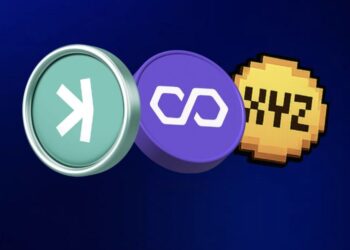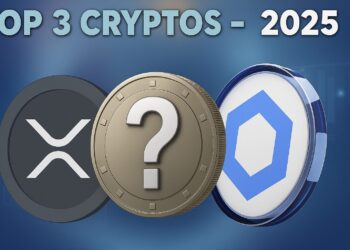Choosing the right EVM wallet in 2025 has become more crucial than ever. With active stablecoin wallets jumping 53% year-over-year to reach 30 million users by early 2025, the shift from speculation to practical everyday use is undeniable. The Ethereum Virtual Machine ecosystem now spans dozens of chains—from Ethereum mainnet to Layer 2s like Base, Arbitrum, and Optimism, plus EVM-compatible networks like BSC and Polygon. This explosive growth means you need a wallet that’s not just secure, but genuinely easy to use.
The landscape has evolved dramatically. Modern wallets are ditching the old friction points—complex seed phrases, confusing transaction prompts, and paying gas fees in tokens you don’t have. Account abstraction and smart wallet technology are now mainstream features, not experimental add-ons. Whether you’re making daily crypto payments, exploring DeFi protocols, or managing NFTs across multiple chains, today’s best EVM wallets deliver institutional-grade security wrapped in interfaces that actually make sense.
This guide examines four standout EVM-compatible wallets that represent the cutting edge of Web3 accessibility, each addressing different user needs while maintaining the self-custody ethos that makes crypto powerful.
1. Family – Premium Ethereum Experience by Avara
Family brings institutional polish to self-custody wallets, backed by Avara (the force behind Aave and Lens Protocol). Available on iOS and web, this wallet transforms Ethereum interaction into something elegant and intuitive. What sets Family apart is its commitment to removing crypto’s biggest barriers without compromising on security or control.
The standout feature is Pocket, Family’s self-custody account system that lets you create wallets using just email or phone authentication with passkeys—no seed phrase required. Your keys stay encrypted and only you can decrypt them, maintaining true self-custody while delivering the convenience of Web2 onboarding. For users who prefer traditional security models, Family also supports manual seed phrase backups and iCloud recovery.
Family’s interface is meticulously designed. Rich media support means NFTs display as intended—videos play, audio streams, and interactive content works natively. The built-in chat feature, powered by XMTP, lets you message friends and send crypto seamlessly. The wallet supports Ethereum mainnet plus key Layer 2 networks including Base, Optimism, Arbitrum, Polygon, and zkSync. A unique “Refuel Wallet” function enables quick bridging of up to $50 in ETH from mainnet to any supported L2, eliminating a common pain point.
Transaction handling is remarkably clear. Family translates cryptic blockchain events into human-readable activity logs, so you always know what happened. The gas management system automatically optimizes fees, and for smart accounts, you can batch multiple actions into single transactions. DApp connectivity works through both an in-app browser and WalletConnect for desktop pairing.
Family has undergone multiple security audits by Zellic and maintains a transparent, open-source approach. With features spanning beginners to advanced users, it’s an excellent EVM wallet for anyone who values polish and functionality equally.
2. walllet.com – Zero-Friction Crypto for Everyone
walllet.com tackles crypto’s adoption problem head-on by eliminating the single biggest barrier: seed phrases. Built on passkey technology from Apple, Google, and the FIDO alliance, this wallet lets you create accounts in seconds using Face ID or fingerprint authentication. There’s no seed phrase to write down, no recovery codes to lose—your biometrics are your backup, and they’re always with you.
This seedless approach isn’t just convenient, it’s transformative for security. Most crypto losses stem from mismanaged seed phrases—whether lost, stolen, or stored insecurely. walllet.com sidesteps this entirely by leveraging the same proven authentication infrastructure you already trust on your smartphone. Your wallet creation and recovery are tied to biometric markers that can’t be phished, hacked, or forgotten.
The wallet implements Account Abstraction through smart contract architecture, unlocking features impossible with traditional wallets. The standout capability: gasless transactions through paymaster sponsorship. You can pay network fees with the token you’re already using—swap USDC without needing ETH for gas, send tokens without interrupting your flow to acquire native coins. This removes one of crypto’s most frustrating friction points and makes cross-chain activity genuinely seamless.
Transaction clarity is another major win. Before signing anything, walllet.com shows plain-language summaries covering every detail—what action you’re taking, which assets are involved, amounts, slippage, permissions granted, counterparty information, and network fees. Built-in risk detection flags suspicious contracts, scam tokens, and unusual approval requests before they can cause harm. This wallet-layer security combined with human-readable transactions means fewer mistakes and safer defaults.
walllet.com is specifically designed for everyday users making daily payments, not pro traders managing complex positions. It excels at stablecoin management and practical crypto usage—paying friends, shopping with crypto, managing savings. The wallet supports all major EVM networks and integrates smoothly with DeFi protocols when you need them. For anyone who wants crypto to work like any other app, walllet.com represents the new standard: secure, simple, and genuinely user-friendly.
3. Ready – Self-Custody DeFi Powerhouse (Formerly Argent)
Ready Wallet, the rebranded evolution of Argent X, delivers sophisticated DeFi features with smart account technology on Starknet—a validity rollup that offers Ethereum security with dramatically lower costs. With over 2 million downloads and backing from one of crypto’s most respected teams, Ready combines power-user features with thoughtful design.
Built on smart contract architecture, Ready enables unique capabilities like social recovery through 2FA guardians, eliminating single points of failure in wallet security. You can set up email-based recovery that works onchain, meaning even if you lose device access, you’re not locked out forever. The wallet supports both browser extension and mobile, with a unified experience across platforms.
Ready shines in DeFi interactions. Native staking is built-in for ETH, STRK, and soon BTC through the BTCFi rewards program. The integrated DEX aggregator finds optimal swap routes automatically, while session keys enable streamlined gaming experiences by letting approved apps sign transactions on your behalf. Multicall batching lets you bundle multiple actions—approve, swap, stake—into single transactions, saving both time and fees. Gas abstraction means you can pay transaction costs in ETH or STRK, with paymaster sponsorship available for gasless transactions.
Transaction costs on Ready are impressively low, often under $0.01, making it practical for frequent DeFi activity. The wallet includes fraud protection through smart contract analysis, portfolio tracking for DeFi positions across protocols, and unclaimed airdrop detection. Recent updates brought cashback rewards in STRK tokens when shopping at major brands through integrated partners.
Ready targets crypto natives who actively use DeFi protocols and want maximum functionality from their wallet. The team is continuously shipping improvements—recent additions include dark mode, enhanced staking options, and cross-chain bridging. Smart contracts powering Ready are used by major exchanges including Binance, Kraken, and OKX, speaking to the robustness of the underlying architecture.
4. Ambire – Next-Gen EVM Wallet with EIP-7702
Ambire Wallet represents the cutting edge of Ethereum wallet technology, being the first wallet to implement EIP-7702 on mainnet when the Pectra upgrade launched in May 2025. This technical innovation allows traditional externally owned accounts (EOAs) to gain smart account capabilities—transaction batching, gas abstraction, enhanced security—without changing addresses or losing compatibility.
The wallet works across all major EVM networks including Ethereum, Base, Arbitrum, Optimism, Scroll, BNB Chain, and Gnosis. Ambire’s standout feature is the Gas Tank system: pay transaction fees in stablecoins, ERC-20 tokens, or let paymasters sponsor fees entirely. Cross-chain fee payments mean you can bridge and transact without needing native tokens on every network. This dramatically simplifies multi-chain activity.
Security is thoroughly vetted—Ambire has undergone 10+ independent audits with no critical vulnerabilities found. The wallet supports hardware integration with Trezor, Ledger, and Grid+ Lattice for maximum protection of high-value holdings. Advanced transaction simulation shows your future wallet balance before executing transactions, helping prevent costly mistakes. Built-in phishing protection and scam detection add additional safety layers.
Ambire’s user interface emphasizes functionality without clutter. Automatic token detection works across all supported networks, with DeFi position tracking for Uniswap and Aave built directly into the wallet. The integrated Swap & Bridge feature aggregates liquidity across DEXs and bridges, finding optimal routes without leaving the extension. Approve-and-swap bundles eliminate annoying ERC-20 approval steps.
The wallet includes Ambire Rewards, a quest-based system that distributes WALLET tokens to active users. Simply using Ambire for onchain activities across supported networks earns experience points, which contribute toward token distributions. Governance is decentralized through WalletDAO, where WALLET holders vote on development priorities and protocol decisions.
For developers, Ambire offers robust integration options. EIP-7702 compatibility means smart features work with existing tools, and the wallet follows EIP-1193 standards for seamless SDK integration. The platform is fully open-source, enabling community review and contributions. Ambire works on any network where MetaMask or Rabby function, but delivers enhanced capabilities when smart features are available.
Understanding EVM Wallet Compatibility
EVM-compatible wallets operate across any blockchain that implements the Ethereum Virtual Machine. This includes obvious candidates like Ethereum mainnet and its Layer 2 scaling solutions, but extends far beyond. When evaluating whether a blockchain supports your EVM wallet, look for key indicators:
Technical markers of EVM compatibility:
- Wallet addresses following the 0x format (hexadecimal strings beginning with 0x)
- Support for Ethereum-standard transaction structures and signing methods
- Smart contract execution using Solidity, Vyper, or other EVM-compatible languages
- Integration with tools like MetaMask, Ethers.js, or Web3.js
- Gas fee models similar to Ethereum’s (measured in gwei for computational work)
Major EVM-compatible chains:
- Layer 2 rollups: Arbitrum, Optimism, Base, Scroll, zkSync Era, Polygon zkEVM
- Alternative Layer 1s: BNB Smart Chain (BSC), Avalanche C-Chain, Fantom Opera
- Enterprise chains: Polygon PoS, Gnosis Chain, Moonbeam (Polkadot)
- Gaming-focused: Immutable zkEVM, Ronin, Oasys
The beauty of EVM compatibility lies in code portability. Developers can deploy the same smart contracts across multiple chains with minimal modifications, expanding their reach. For users, this means your BSC wallet works equally well on Arbitrum or Polygon—same addresses, same interfaces, seamless transitions. Modern wallets detect networks automatically and adjust accordingly, making cross-chain activity increasingly frictionless. As the ecosystem matures, EVM compatibility remains the dominant standard, with new chains regularly launching EVM-compatible implementations to tap into existing developer expertise and tooling.
Choosing Your Ideal EVM Wallet: Key Considerations
Selecting the right wallet depends on your specific use case and priorities. Here’s how to match wallet features to your needs:
For beginners and casual users:
- Prioritize seedless authentication (walllet.com, Family with Pocket)
- Look for human-readable transaction summaries and built-in security alerts
- Value intuitive interfaces over advanced features
- Consider mobile-first designs for everyday accessibility
For DeFi power users:
- Seek gas optimization features like paymasters and multicall batching (Ready, Ambire)
- Ensure deep protocol integrations for staking, lending, and yield farming
- Verify support for your preferred Layer 2 networks and DEX aggregators
- Check for portfolio tracking and DeFi position management
For multi-chain traders:
- Confirm support across all networks you use regularly
- Look for integrated swap and bridge aggregators to find best rates
- Consider wallets with cross-chain gas payment capabilities
- Evaluate transaction speed and fee efficiency on each supported chain
For security-focused users:
- Review audit history and open-source status
- Assess hardware wallet integration options (Ledger, Trezor compatibility)
- Look for transaction simulation and scam detection features
- Consider social recovery or multi-signature capabilities for backup
The wallet landscape continues evolving rapidly, with 2025 bringing mainstream adoption of account abstraction, seedless authentication, and cross-chain functionality. Test multiple options with small amounts first—most wallets are free to use, and trying several helps you understand which interface and feature set match your workflow. Remember that you can use multiple wallets simultaneously, each optimized for different purposes within your overall crypto strategy.
Conclusion
The EVM wallet ecosystem in 2025 offers unprecedented choice and sophistication. Whether you’re drawn to walllet.com’s seedless simplicity, Family’s polished design, Ready’s DeFi depth, or Ambire’s technical innovation, each wallet represents a thoughtful solution to crypto’s historical friction points. The best EVM wallet for you depends on your priorities—beginners benefit most from streamlined onboarding and clear interfaces, while experienced users may prioritize gas optimization and advanced features.
What’s clear is that wallet technology has matured dramatically. Features once considered experimental—account abstraction, gasless transactions, human-readable prompts—are now standard in leading products. As blockchain adoption accelerates and use cases expand beyond speculation into genuine utility, having a reliable, user-friendly EVM wallet becomes essential infrastructure. The wallets highlighted here each excel in different ways, united by their commitment to removing barriers while maintaining the self-custody principles that make crypto powerful.
Disclaimer
This is a sponsored post. The information provided in this article is for informational purposes only and does not constitute financial advice. DeFi Planet does not endorse or recommend any specific investment decisions and reminds readers to conduct their own research and due diligence before taking any financial actions. Digital assets are highly volatile and can lose some or all of their value. DeFi Planet is not responsible, directly or indirectly, for any damage or loss caused or alleged to be caused by or in connection with the use of or reliance on any content, goods or services mentioned in the article.
If you want to read more articles like this, visit DeFi Planet and follow us on Twitter, LinkedIn, Facebook, Instagram, and CoinMarketCap Community.
“Take control of your crypto portfolio with MARKETS PRO, DeFi Planet’s suite of analytics tools.”





















